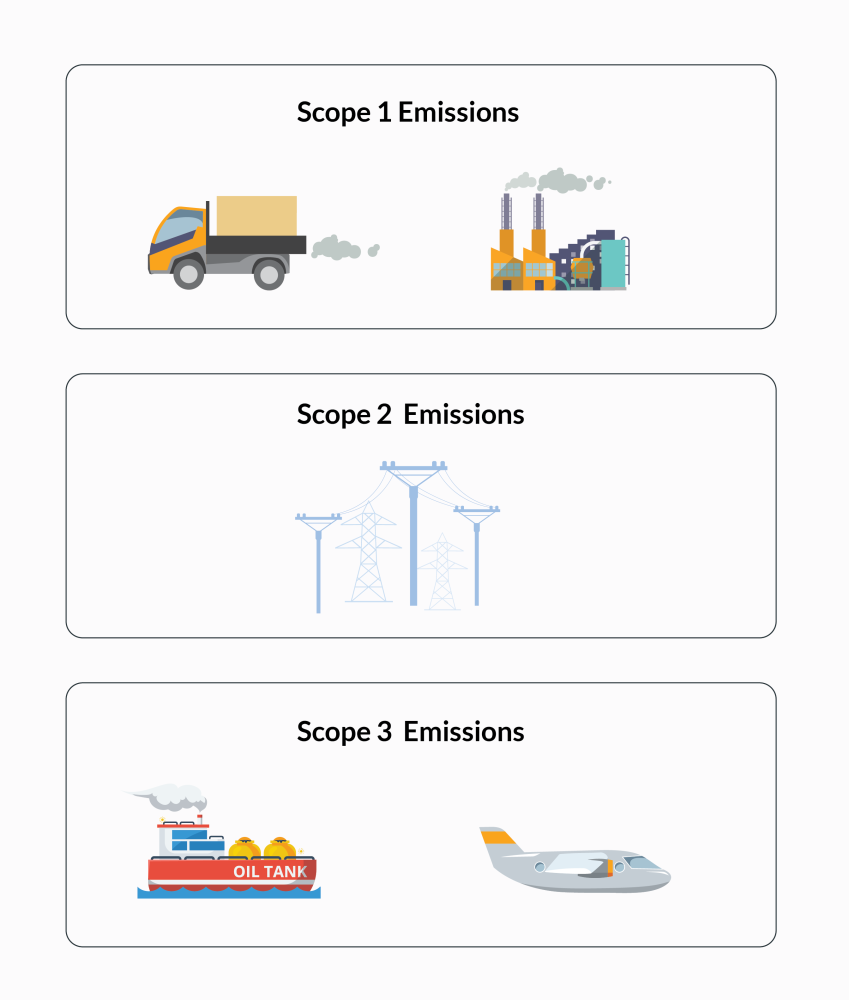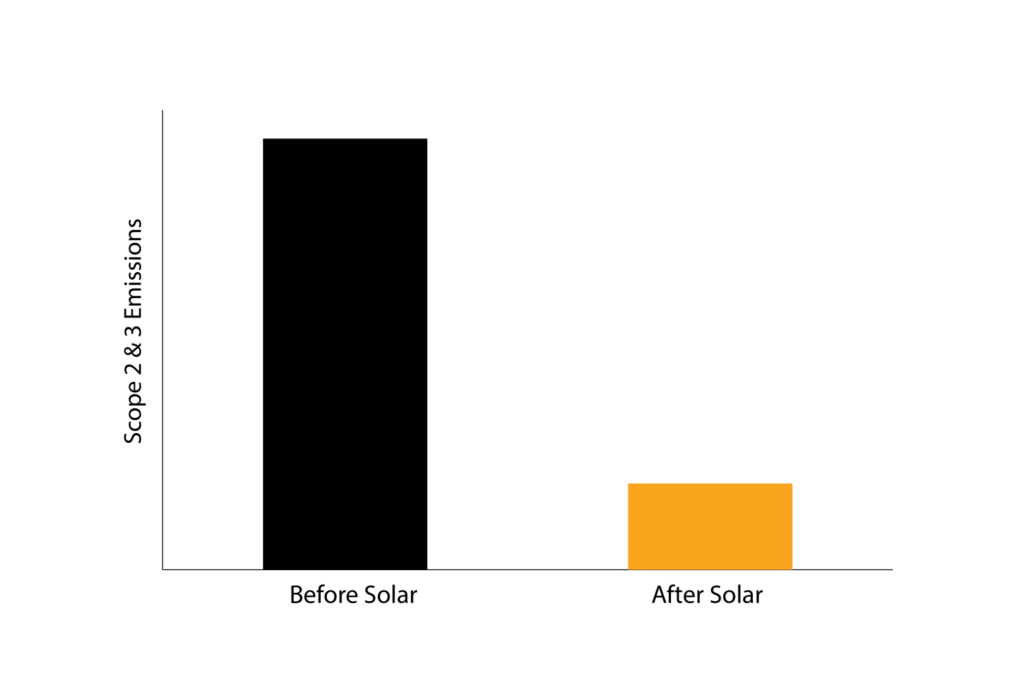
In today’s rapidly evolving world, reducing carbon emissions has become an imperative rather than an option. Not to mention, ESG and Sustainability Managers are under constant pressure to deliver results with a limited budget and not enough time. So sometimes, understanding and mitigating your carbon footprint means looking beyond direct emissions and everyday operations.
What Are the Different Scopes of Emissions
To break it down, carbon emissions can be divided into three ‘scopes’:
- Scope 1: Emissions are direct emissions from owned or controlled sources, such as combustion of fuel in company-owned or controlled boilers, furnaces, or vehicles.
- Scope 2: Emissions are indirect emissions from the generation of purchased energy, primarily electricity, consumed by the company.
- Scope 3: Emissions are all indirect emissions not included in Scope 2 that occur in the company’s value chain, including both upstream and downstream emissions.

Improving operational energy efficiency, embodied carbon of building materials, and electrifying vehicle fleets are some of the ways you can meet your Scope 2 & 3 targets. However, each strategy can require a considerable investment of time and resources to analyse respective feasibility and impact, often costing anywhere from £500 to £10,000 per building. This only adds to the pressure on ESG and Sustainability teams.
One question we often get asked is – are there any quick wins? While there is no single technology that’s sufficient by itself to meet an organisation’s net-zero targets, there are some simple strategies that can be employed as quick wins.
And the simple answer is – YES! If yours is an organisation with:
- Multiple built assets
- Distributed assets and energy load
- High energy consumption
Solar can be one of the quickest and most straightforward strategies to have an impact on your Scope 2 & 3 emissions. Solar is not just a means to harness the sun’s power for daily use, but a significant tool in shrinking carbon footprints and moving us towards a more sustainable future.
The Impact of Solar
An effective rooftop solar installation can significantly reduce Scope 2 emissions by replacing traditional grid power, which typically relies on fossil fuels, with clean, renewable energy generated onsite.
Typically, a 100 kWp solar system in the UK can abate around 15 tonnes of CO2 per year. With an appropriately sized system, your emissions and grid energy consumption can see a drop of over 40%.
Moreover, Scope 3 emissions can also be mitigated with solar. As a building owner, providing solar-powered common areas or supplying renewable electricity to tenants can reduce emissions from their energy usage. Likewise, as a developer, constructing solar-ready buildings can significantly decrease the indirect emissions your projects generate.

What Can You Do?
If you’re an ESG, Sustainability, Energy, or Asset manager, looking to control your skyrocketing energy costs and reduce your carbon footprint, solar energy presents an immense opportunity. Every building that you own is a potential Virtual Power Plant.
At PowerMarket, we aim to help you decarbonise and monetise your buildings by harnessing the sun’s potential to your benefit. Whether it’s identifying the best solar solutions for your needs, guiding you through your solar journey, or selling your solar-generated electricity to corporate buyers, we’re here to help. After all, every step towards solar is a step towards a more sustainable future.
Subscribe to the PowerMarket Newsletter! PowerMarket brings you key updates and emerging insights every month to optimise your energy and make solar simple.
PowerMarket is a B2B software-as-a-service, solar management platform. It uses satellite imagery and advanced AI to automate and digitalise:
- Solar planning and feasibility analysis
- Solar execution and project management
- Solar monitoring and portfolio management
Saving you over 90% of your time and resources, so you can focus on what you do best!
